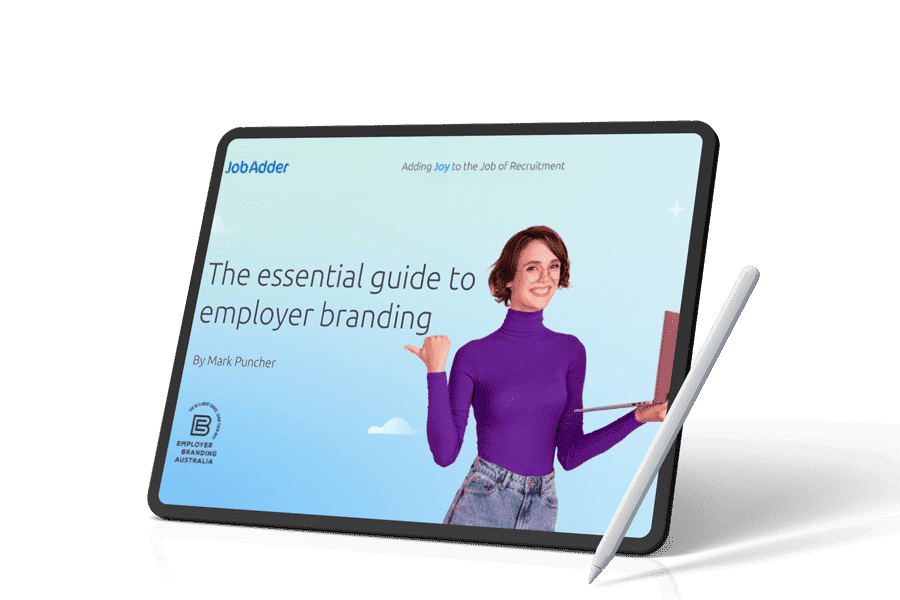Recruitment Blog
Revising your employee value proposition to match a post-pandemic workforce

In the wake of the COVID-19 pandemic, many businesses have revised their employee value propositions (EVPs) as they try to attract the best talent in a candidate-short market.
The employee value proposition (EVP) is a critical component for any company, as it lays out what employees can expect from working for that organisation. For example, an EVP will detail the perks, company culture and other important benefits offered in exchange for their time, effort and skills.
It outlines what the company expects from its current employees in terms of commitment, productivity and values. The company’s EVP can also help a company attract the best employees while improving its long-term retention efforts.
Below, I’ve explained what an EVP is, what companies typically include in them, what candidates are looking for in an EVP, how to create an EVP and how to communicate your EVP. If you’ve got any follow-up questions, feel free to get in touch.
FREE DOWNLOAD: The essential guide to employer branding
What is an employee value proposition (EVP)?
An employee value proposition is a statement that communicates the employer brand. It typically consists of three components:
- Employee benefits
- Employee experience
- Employee development
An effective EVP will reduce employee turnover and act as a talent acquisition tool. The most compelling EVPs attract potential employees who turn into your company’s top performers.
A well-written EVP makes it clear to potential new hires why the company offers advantages in exchange for their time and skills.
An honest and compelling EVP will attract employees who excel at their jobs and keep those top performers happily employed at your company.
What do companies typically include in employee value propositions?
There are several components of employee value propositions that companies typically include. For example, employee benefits might include health insurance, pension matching and paid time off. As well, you could mention your company’s core strengths and values.
Here’s a more complete list of what to include in your company’s EVP:
- Company strengths: List out what makes your company stand out from the competition. For example, do you have groundbreaking research and development teams? Whatever makes your company unique, make sure to list it in your EVP.
- Compensation: Include information about salaries, bonuses, stock options and financial incentives that your company offers. Make sure your compensation plan is upfront and easy to understand.
- Benefits: Benefits can include anything from car allowances to employee discounts. Talk about what kind of perks and employee benefits your company offers, such as gym memberships or phone plans.
- Work culture: Employees want to know that they’ll enjoy their working environment. Highlight the leadership team, social events held by the company and the types of employees that currently work there.
- Company culture: Every employee wants to feel like they’re contributing to something bigger than themselves. Explain what your company’s core values are, as well as its mission statement.
- Career development initiatives: Employees want to know there’s room to continually learn and grow. Highlight things like employee training programs or mentorship opportunities.
- Parental leave: Parental leave is an important benefit that more employees expect to see. If your company offers parental leave, make sure to mention it in your EVP.
- Employee engagement: Talk about how you measure employee engagement and what initiatives you have in place to increase employee satisfaction.
What are employees looking for in an employer post-pandemic?
As a result of the COVID-19 pandemic and its ripple effects across the working world, many employees now focus on mental health issues, flexible schedules and a work-life balance. Some employees would strongly consider finding a new job if their current employer forces them to return to the office.
Overall, your employees want to know that your organisation takes their needs seriously. Your EVP must show employees that your company doesn’t try to force everyone into a one-size-fits-all scenario.
Instead, your ability to bring in the best talent after COVID-19 hinges on your ability to offer an EVP that highlights strong company values, flexible working, interesting benefits, extra perks and an enjoyable employee experience.
It’s important to understand the following elements your employees are looking for:
- Core values that tie to the human and emotional experience
- Options for remote work
- Flexible working schedules
- Work-life balance
- Employee wellness initiatives
- Private healthcare coverage
Let’s review these items in more detail.
Core values
Don’t focus company values on career development or compensation only. Instead, your company’s core values must tie into the components of an enhanced life experience. You might emphasise personal growth and shared purpose. Values such as trust, respect, integrity and accountability are also good examples.
Employees now want to feel that their employer cares about them as people first and foremost. When writing your employee value proposition, make sure to emphasise your company’s commitment to employee well-being.
Options for remote work
It’s no surprise that many employees now want to work from home. If you can allow this option, be sure to include it in your EVP. Do you offer full-time, part-time or short-term remote work opportunities? If so, include these details in your EVP.
Flexible working schedules
Many employees today look for flexible working hours. Look for ways that you can help your employees to shift their schedules to accommodate childcare, fitness needs or their working preferences.
Work-life balance
Do you have the ability to help employees improve their work-life balance? If you can, it’s one of the areas that employees look for during these post-pandemic times. For instance, some employees enjoy working longer hours four days per week so they can enjoy a longer weekend.
Employee wellness initiatives
Look for ways where you might include employee health and wellbeing benefits. These could include employee coverage for mental healthcare, fitness classes, healthy eating programs or access to employee assistance programs (EAPs). Many employees enjoy these types of wellness perks.
Great healthcare coverage
For employees in the UK, private health insurance is becoming more important. They want to see health insurance, dental insurance and vision care covered by employers.
Need help building your employer brand? Our free eBook has you covered…

How to create a strong employee value proposition
To create your employee value proposition, start by researching your competitors to see what benefits they offer. Then, work with your team to come up with unique benefits that will set your company apart.
Once you have a list of benefits, it’s time to start writing your EVP. Here are some specific tips to follow:
- Decide what types of employees you want your EVP to attract and/or retain: Design your EVP around these employee personas.
- Identify what makes you an attractive employer: Make a list of employee benefits and perks. Highlight these employee benefits to attract top employees. Get introspective here, if you struggle, consider conducting employee surveys with current employees to get some insight.
- Emphasise what separates you from your competition: For this section, pull from your company culture, the work you do or your values.
- Ensure you can deliver on what you promise: If you make employee benefits promises in your EVP, be sure to follow through. Failing to do so will only hurt your company’s reputation.
Employee value proposition examples
By looking at examples of other EVPs, you can start to form your own. Here are five EVP examples to get you started:
- HubSpot’s EVP is about “autonomy, transparency, mission and heart.” They focus on creating a company culture where employees gain ownership over their work, teams share transparency inside projects, and employees work inside a heart-centered mission.
- Hilton’s EVP is all about “thriving.” The Hilton EVP focuses on its team’s performance and wellbeing by offering support and industry-leading benefits.
- Adobe’s EVP proclaims its employees as its greatest asset. The company states that Adobe is a place where employees can do their best work, be themselves and thrive.
How should you communicate your employee value proposition?
Share your employee value proposition when hiring new talent. Make sure your hiring managers use the EVP when interviewing.
It’s an excellent tool for showing prospective employees how the company provides them with proper tools as they start new career paths. Plus, don’t forget to integrate the EVP throughout the first phase of onboarding new hires.
Use your EVP as a retention tool. Make employee value proposition communication a regular part of your email newsletter or on your company blog. Keeping the EVP front and centre will help you remind employees why they love working at your company. It helps them remember what makes your company different from the competition.
For marketing purposes, sharing your EVP on your careers page is a great way to attract new employees. It gives candidates insight into what makes your employees’ lives better and easier compared to working for another company. Make it visible on your LinkedIn profile and other social media channels and include testimonials from successful employees.
Use JobAdder to get the most out of your EVP
The employee value proposition is an important component for any company. By taking the time to create a strong employee value proposition, you can attract top talent and keep your current employees happy. And that’s a win-win for everyone.
With our Candidate Portal feature, you can embed your branding and EVP into a customised portal where candidates can submit their information, provide updates on their job search, indicate when they’re open to opportunities and upload video cover letters.
To find out more about employer branding and how to develop your EVP, download our free eBook now: The essential guide to employer branding.
Related blog posts

In recruitment, business development (BD) can’t just be a job title, it has to be a mindset. While many agencies …
Ready to get started?
Talk to one of our friendly team members


